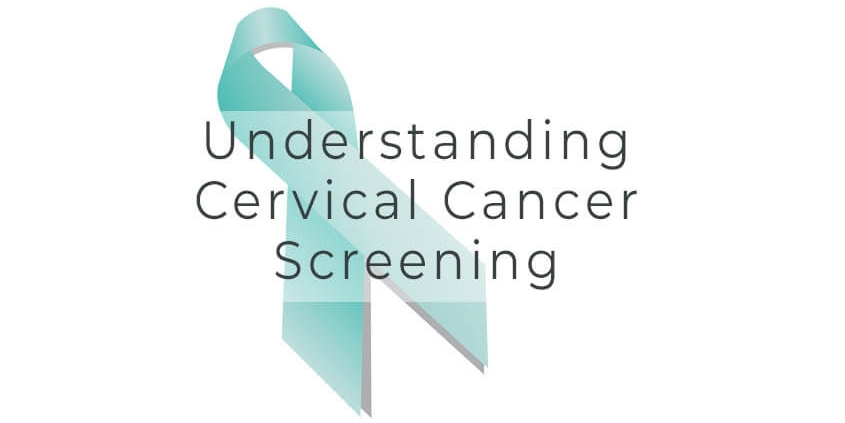Screening for cervical cancer
There have recently been changes in how we use tests for cervical cancer screening. The new testing regime is safer and more reliable, which has simplified the diagnostic pathways and strategies we need to follow if you are found to have any abnormal results.
Why have changes been made to cervical cancer screening?
Over the last 20 years, it has become clear that pre-cancerous changes in the cells of the cervix are provoked by persistent Human Papilloma Virus (HPV) infection. So far as we can tell, there are no other causes. Now that we know this, we have discovered that it is much easier to test samples for HPV than it is to analyse cell samples under a microscope. The process is faster, more efficient, less prone to error and cheaper than the previous tests.
Human Papilloma Virus
Hang on – what is HPV?
Human Papilloma Virus (HPV) is best considered as ubiquitous, as all human beings carry one or more of these viruses on their person at any one time. Although this sounds scary, there are not usually any problems from this, as the skin cells and the multitude of friendly germs which cover us prevent the virus from harming us. From time to time, this first line immune defence can fail; when this happens on our outsides, we might develop warts or verrucas (which are warts on the sole of the foot).
HPV and cancer
Unfortunately, as the softer membranes of the body are not as robust as the skin cells on our outside, it can be easier for these cells to become infected by HPV. Usually, these infections are transient, and the immune system clears these without any assistance within a number or months; certainly, the clearance rate by 12 months is around 90%. In the remainder of cases, the affected cells might become disorganised and deregulated, where upon the cells become pre-cancerous. We have associated HPV infection with soft tissue cancers in the cervix, throat, anus, rectum and oesophagus. We expect that rates of these cancers will fall, as the impact of vaccinating younger people against HPV infection becomes apparent. The data on this is already quite encouraging, even after only 12 years of the programme.
What has not changed?
- Cervical smears are still recommended from age 25 until the age of 64, ideally every 2-3 years.
- The method for taking the sample has not changed – you will still require speculum examination by you Dr or nurse.
- If we find HPV positive samples, the laboratory technicians can then undertake analysis of the cells, but only if the cervix has been sampled properly by passing a speculum, directly visualising the cervix and taking samples directly from those cells.
What has changed?
The only difference from your perspective will be the way in which results are reported after your smear. These will now show as either HPV negative, which put bluntly means there is no risk of developing precancerous changes, or HPV positive.
HPV positive DOES NOT equate to cancer, or even pre-cancerous changes. If your sample is HPV positive, the virus type(s) present will be identified as low or high-risk strains. It is only the high-risk strains that are problematic from a cancer-causing perspective. The HPV positive samples showing high-risk strains are then further processed, to analyse the cells, as previously happened for all samples. Depending on this result, you may be recommended to take further tests.
Cervical Cells
Vaccinations against HPV
Vaccinations against HPV have been available since around 2007. The UK government adopted a policy to vaccinate youngsters around the age of 12-13 against HPV. For the first 10 years of the national program, only girls were vaccinated, although this has been addressed and all children are now offered vaccination.
Gardasil ™ has been formulated to protect against the 9 most frequent high-risk strains of HPV. It is a well-tolerated vaccination and I fully recommend this for young people, preferably before likely sexual exposure to HPV has occurred. The national programme holds that vaccination is appropriate between ages of 12 and 13; however, the vaccination is licensed until aged 26 and it is even sensible to consider vaccination in older age groups on a case by case basis. The currently recommended course to achieve immunity is 2 shots if you are under the age of 14 or 3 shots if you are older than 14.
How we can help you at Dr Tickle
We will offer you smear appointments every 2 years; these dates will be kept in our diary reminders on your file so that we can help you to stay on top of this.
We offer vaccination against HPV – this is a course of two vaccinations, 6-12 months apart, which offers cover against 9 of the high-risk strains of HPV.
We are able to vaccinate young men and boys who have been excluded by the NHS so far; if you have sons, grandsons or nephews between the ages of 15 and 24 who would like to be vaccinated, we are able to offer this.
Should you have received a positive HPV result and this is causing you concern, we have longer appointments to discuss the implications of this and the next steps to resolve this issue.
Dr Tickle take-home message:
- Smears are available at this clinic and are now cheaper and more efficient than they were before.
- Unless there is a strong indication, such as family history or large number of sexual partners, cervical screening is recommended at a 2-3 year interval from aged 25 to aged 50, thereafter every 5 years.
- HPV positivity does not equate to cancer. Keep calm – come see Dr Tickle.
Call 07788797824 to arrange an appointment at our private London GP clinic.



